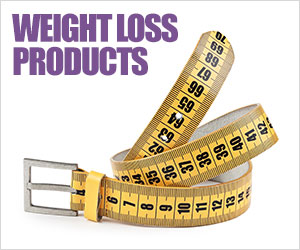Potassium and weight loss

The
combination of being overweight and maintaining a diet high in sodium
puts many of us at great risk of developing high blood pressure, heart
disease and many other life threatening or debilitating diseases.
Consuming adequate amounts of Potassium each day can help us to reduce
our risk of developing these diseases and achieve our weight loss goals.
This article explains what Potassium is, why we need it, what diseases
it helps combat, how it helps with weight loss and how to get more of
it into our daily diet.
What is Potassium?
Potassium is an essential dietary mineral and electrolyte which is stored
inside our body cells.
Potassium is an essential dietary mineral because it helps:
- build muscle
- prevents excess fluid retention and maintain a healthy electrolyte balance
- optimize nerve functions
- the release of energy from protein, fat, and carbohydrates during metabolism
- regulate blood pressure
- our heart and kidneys to function properly
Why do we need Potassium?
In addition to, and because of the bodily functions it helps listed above,
having an adequate Potassium intake can assist us in achieving weight
loss and because Potassium has many protective properties, it can help
us fight some of Australia 's most dangerous diseases.
Let's have a closer look at how it helps us lose weight and how it protects
us from disease.
Potassium and weight loss
Because Potassium helps us to build muscles, helps our muscles work properly
and helps us convert the food we eat into energy,
it is particularly important to those of us who have weight loss goals.
Bigger muscles burn more calories, so by helping us to build slightly
bigger and stronger muscles, Potassium has a direct impact in helping
us to turn our bodies into calorie burning machines.
By helping to provide the energy we need, helping our muscles (including
our heart) work efficiently and effectively and ensuring a proper balance
of electrolytes, Potassium helps us exercise daily, which is critically
important to anyone wanting to shed a few unwanted kilos.
Because Potassium is excreted from our body in sweat, those of us who
are exercising to lose weight need to be extra diligent, conscious of
the fact that we also need to be replacing the Potassium lost during exercise.
As you can see, because daily exercise is a critical element to successful
long term weight loss and improved general health, all of us with weight
loss goals need to have sufficient levels of Potassium in our bodies at
all times.
Potassium and disease prevention
It is estimated that on average, Australians eat twice as much sodium
(salt) as we need on a daily basis.
Diets containing high levels of sodium are dangerous and put us at greater
risk of experiencing serious health risks which are compounded by excess
body fat.
Among the health risks associated with high sodium diets, the most serious
include:
- Heart failure
- Kidney problems and kidney stones
- Stroke
- Gastric cancer
- Osteoporosis
- Liver disease
- Fluid retention
- Certain types of asthma
As well as helping to balance the sodium in our cells, Potassium can
actually help facilitate its excretion from our bodies as well.
As long as it remains within safe levels, increasing Potassium in our
bodies is believed to have the same effect as reducing our sodium intake
and in doing so reduces our risk of developing high blood pressure and
the other health conditions identified above.
It is because the balance of Potassium to sodium in our bodies is so
important, that many of us need to pay more attention to our Potassium
intake and look for ways to increase it in our daily diets.
How much Potassium do we need?
According to the National Health and Medical Research Council (NHMRC)
in Australia, the recommended dietary intake (RDI) for Potassium for
adults is between 1950 to 5460mg per day.
As with many of the elements in our body, getting the right amounts each
day is very important and having too little or too much in our body at
any one time can have serious implications on our health.
Symptoms of low Potassium levels often include:
- tiredness
- muscle weakness
- nervous disorders
- insomnia
- hypertension (high blood pressure)
- constipation
- a slow and irregular heartbeat
- muscle damage
- poor appetite
- mental apathy
People with diabetes are often deficient in Potassium and prolonged diarrhoea,
vomiting, sweating and the use of some diuretics can deplete our Potassium
stores.
Having too much Potassium in our bodies is called hyperkalemia.
At best, levels of Potassium that are too high can produce minor ailments
like stomach irritation. At worse, severely high levels can cause heart
attack, so it is very important to get just the right amount each day.
How to get more Potassium into our daily diet
Eating a wide variety of foods that contain Potassium
is the best way to get an adequate amount of it each day.
To find out exactly how much potassium the foods we eat contain,
we can all start reading food labels more carefully and looking up
the potassium content of foods in the Nutritional
Food Tables available
free on this website.
Having said that, generally speaking, good natural sources
of Potassium include:
- breads, cereals, and other grain products
- fruits
- vegetables
- meat, poultry and fish
- dairy products
Breads, cereals, and other grain products
Among this food group, the best sources of Potassium are found in:
- Wheat germ
- Bran cereal
- Whole-wheat hot cereal, cooked without salt
- Whole-wheat bread
- Oatmeal, cooked without salt
Fruits
Among fruits, the best sources of Potassium include:
- Dried apricot halves
- Prune juice
- Orange juice
- Bananas
- Kiwi fruit
- Peaches
Vegetables
Among vegetables, the best sources of Potassium include:
- Squash
- Potato
- Avocado
- Spinach
- Tomatoes
Meat, poultry, fish and alternatives
Among protein sources, the best sources of Potassium are:
- Beef
- Veal
- Pork
- Salmon
- Trout
- Lentils
- Kidney beans
- Peanuts (dry-roasted, without salt)
Dairy
Within dairy, good sources of Potassium include:
- Milk
- Cheese
- Yogurt
In addition to eating a wide variety of foods that are naturally high
in Potassium, it's also important that we avoid destroying
the Potassium naturally found in the foods we eat.
Two of the greatest "destroyers" of natural Potassium in food are food
processing and food preparation.
Let's have a quick look at each of these.
Potassium and Processed Foods
Generally speaking, food processing tends to lower the Potassium levels
in many foods while increasing the sodium content. Therefore, it is better
to eat unprocessed foods such as fruit, vegetables, wholegrain breads
and cereals.
This suggestion is supported by the fact that approximately 75% of the
sodium that we consume comes from the processed foods that we eat each
day.
Potassium and Food Preparation
The Potassium found in some foods is easily destroyed if that food is
soaked or boiled.
To minimize Potassium loss during food preparation:
- cook Potassium containing foods in a minimal amount of water
- cook Potassium containing foods for the shortest possible time
Conclusion
When we are overweight, we are at increased risk of developing high blood
pressure, heart disease and many other life threatening or debilitating
diseases.
As well as contributing to the healthy operation of many essential body
functions, Potassium can help fight some of these dangerous health conditions
and improve our chances of successfully achieving our weight loss goals.
This article explained what Potassium is, why we need it, what health
conditions Potassium helps fight, how it helps us achieve our weight loss
goal and how to get more of it into our daily diet.
If you need further help to ensure you're getting the right amount of
Potassium in your diet, make an appointment with a dietitian listed in
our weightloss business directory.
Good luck with your weight loss and thanks for visiting weightloss.com.au.
© Copyright Ultimate Weightloss.
This article was written by Scott Haywood.
Scott is the editor of weightloss.com.au. Scott has developed an expertise in fitness and nutrition, and their roles in weight loss, which led him to launch weightloss.com.au in 2005. Today, weightloss.com.au provides weight loss and fitness information, including hundreds of healthy recipes, weight loss tools and tips, articles, and more, to millions of people around the world, helping them to lead happier, healthier, lives.
You can follow Scott on Google+ for more interesting articles.





















